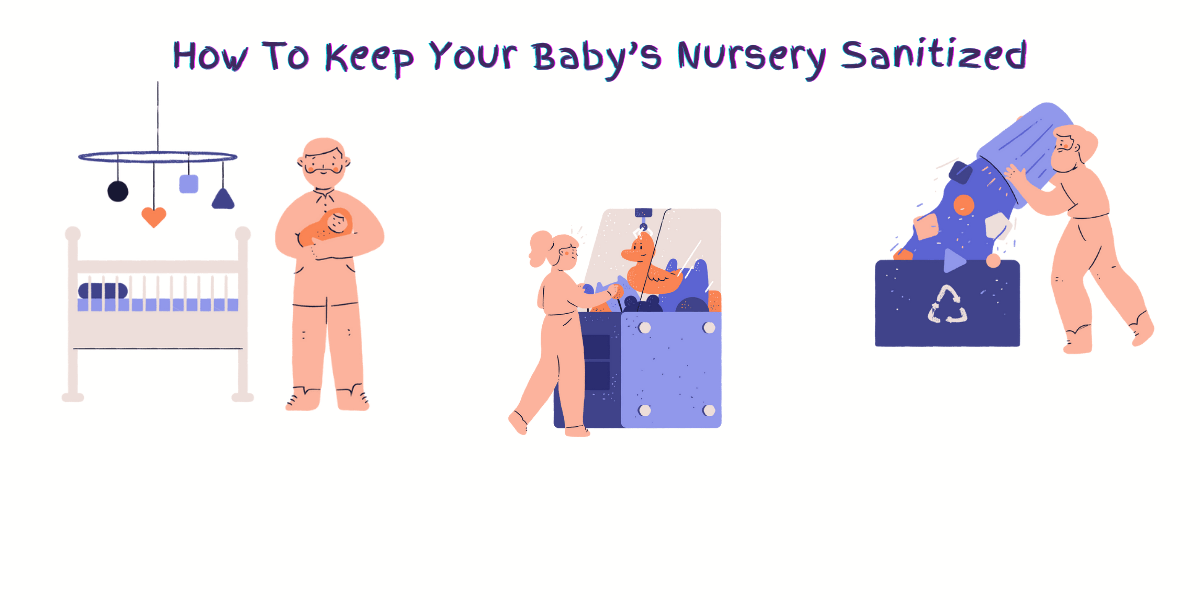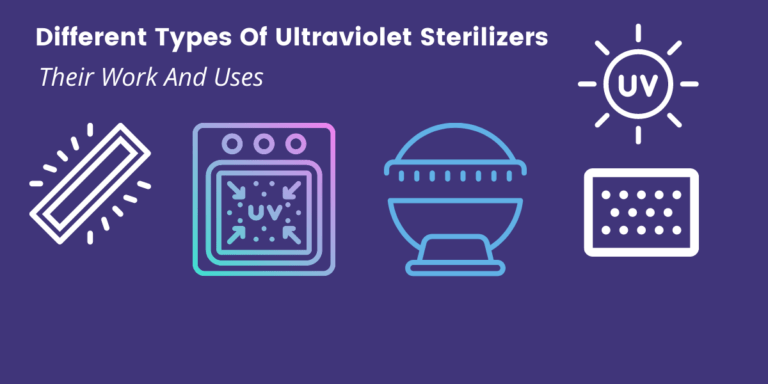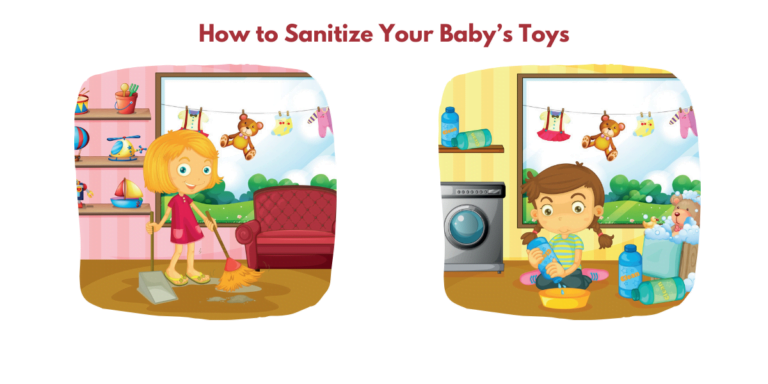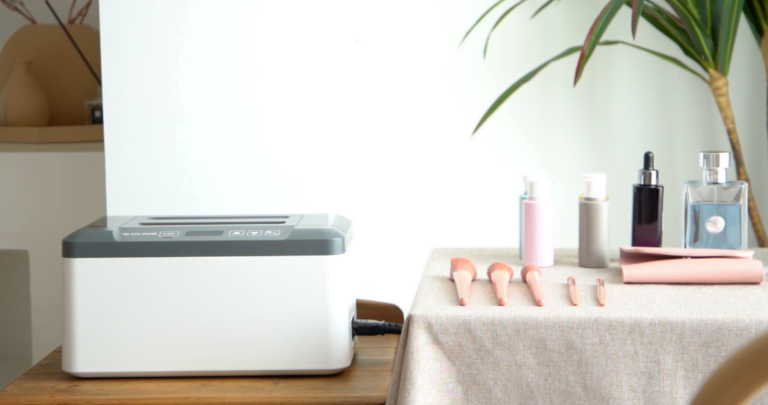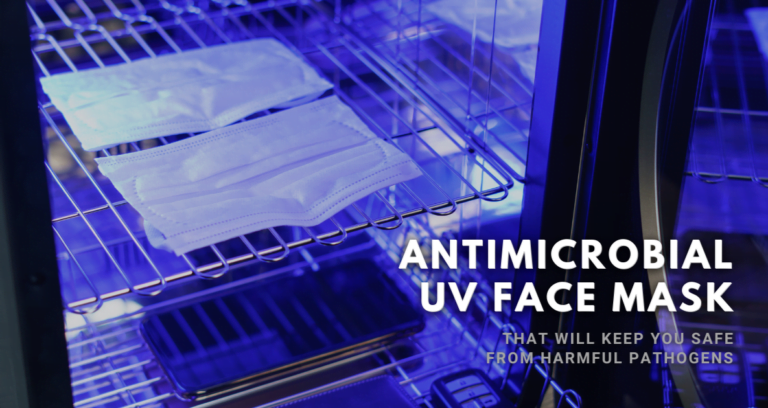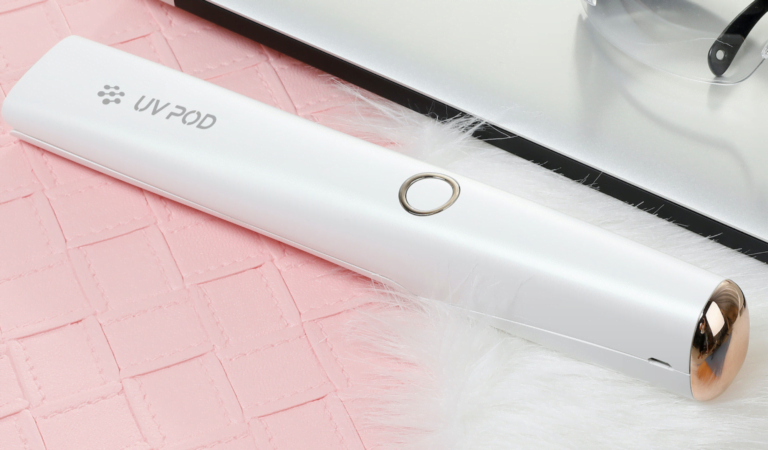Tips for Sanitizing The Nursery For Your Baby’s Safety
Sanitizing The Nursery For Your Baby’s Safety
Sanitizing the nursery is important to ensure your baby’s safety, but it doesn’t stop children from coming in contact with germs. It can be difficult to keep kids safe and healthy while also maintaining a clean environment. However, you can do things to help prevent exposure to germs that will improve their day-to-day experience without compromising on health or hygiene standards.
Parents and caretakers have a lot of work to do when it comes to protecting their children’s health. This is especially true for infants in their care, who are vulnerable to infection from airborne bacteria and viruses. When parents are busy with other responsibilities, like managing kids or working outside of the home, they can’t always be vigilant about sanitizing surfaces that come into contact with their child’s skin.
Keeping kids safe and healthy while maintaining a clean environment can be difficult. However, you can do things to help prevent contact with germs that will improve their day-to-day experience without compromising on health or hygiene standards.
To protect children, they must be exposed to healthy bacteria and have a strong immune system. This means making sure the nursery is sanitized regularly with soap and water or using products like bleach if necessary.
The first step in ensuring this protection for your child’s safety starts by keeping them away from the outside world as much as possible, including staying inside when not at school, daycare, or home during sicknesses, etc.
The bottom line is that it’s almost impossible to determine when infections are the direct result of contact with everyday germs. Therefore, best practices for infant safety include sanitizing surfaces and objects regularly so that they are not contaminated by dirt or saliva.
It isn’t easy to manage hygiene when you’re juggling children and other family members. To make sure your nursery is safe for the little ones, consider these tips:
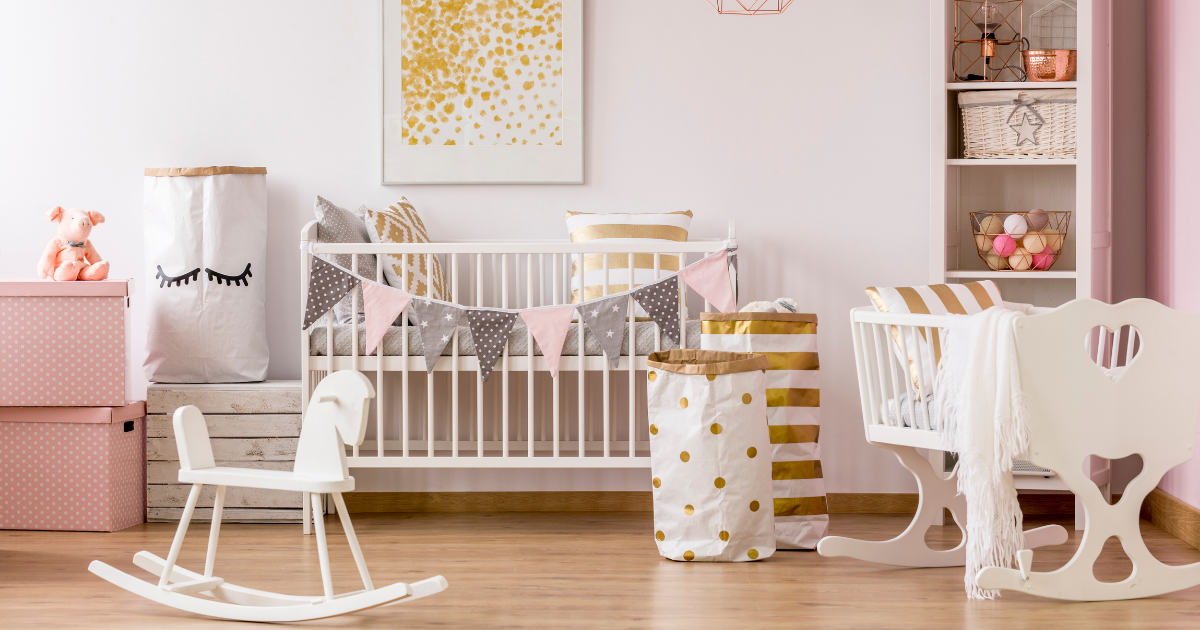
How to keep the nursery clean
A clean and germ-free nursery is essential for your baby’s safety. It would help if you planned to create an environment safe from germs and harmful substances. This includes ensuring all the rooms in the nursery are kept sparkling, making sure you have plenty of storage space for toys, bedding, clothes, diapers, and other items that need to stay dry during a diaper change.
There are a few things to consider when setting up the nursery for your new baby. First, you need to make sure that it’s clutter-free and has an organized layout to avoid getting overwhelmed with messes. Second, ensure that you have stocked this room with enough diapers so there won’t be a shortage of them as soon as they start leaking through the crib or changing table! Lastly, be prepared for all their little accidents by having plenty of clean clothes on hand and disposing of diapers in an old-fashioned trash can.
Wash hands
Before visitors enter the nursery, have them wash their hands. It is a good idea to make sure everyone in your household knows how to sanitize safely before touching your baby.
When it comes to newborns, cleanliness is important for their immune system development. Newborns need constant skin-to-skin contact with their parents or caregivers because they are more susceptible when coming from a hospital.
Children that are not yet toilet trained should be washed often with soap and water. For the first few years, their immune system may still be vulnerable to germs, leading to illnesses such as colds or flu.
People need to wash their hands after using the bathroom, especially if they have a child with asthma. It can also help prevent allergies and other illnesses from living in contaminated environments.
Although it is still a theory, the evidence suggests that washing hands may reduce one’s risk of contracting colds.
Wipe down changing table
Carefully deep clean the changing table with soap and water or disinfectant. Carefully wiping down the changing table will help prevent bacteria from accumulating, leading to illness.
When changing clothes, wipe down the surface of a changing table with an alcohol-based cleaner. Make sure to disinfect both inside and out.
Wipe down changing tables often to avoid having a dirty surface that can cause the spread of germs. The next time someone changes their child, wipe down the table before and after using disinfectant wipes or baby wipes.
Wipe down toys
Every week, parents should wipe down bath toys, rubber toys, and teething toys to ensure cleanliness and safe for their babies.
Toys should be cleaned with disinfectant and then rinsed. If a toy is the surface of an object, it can also be washed off or run through the dishwasher.
When you purchase a toy, it is important to clean it immediately. Cleaning with water or wet cloths will help prevent the growth of bacteria and mold on your toys. Additionally, avoid using chemicals that can cause damage to surfaces, such as paint and plastic materials used in some children’s toys.
Change bedding regularly
You should change your baby’s bedding regularly. You can use a weekly wash for the sheets and mattress protector.
Drool and minor diaper leaks can cause unseen bacteria to grow in the crib. To prevent this, change bedding regularly and wash sheets with bleach or hydrogen peroxide before using them on your baby’s skin.
According to the CDC, it is important to change bedding regularly. Dust particles can also settle on the bed and cause skin irritation and allergies.
Eliminate clutter
Clutter in the nursery can be an issue for parents and babies. Eliminating clutter will help make cleaning easier and quicker, important for your baby’s safety.
This article is about cleaning and organizing your baby’s toys and clothes. It includes tips for storing your clutter, containers that are easy to use, organizing clothing in baskets or drawers with the help of a labeler or hanging from shelves, finding storage solutions on Amazon .com, and more!
Choose eco-friendly
Choosing eco-friendly products is a good way to keep the nursery clean and safe. Many harmful chemicals can cause dangerous health effects on children.
It is easy if you want to go green and save some money. Budget-friendly options are available that can help you achieve your eco-friendly goals without sacrificing quality or performance.
There are many eco-friendly, safety-approved cleaner products on the market. Many of these can be found by searching “Eco-Friendly Cleaners.”
When choosing an eco-friendly cleaning product, it is important to consider the ingredients.
Homemade cleaners can be made with vinegar and baking soda that you probably already have in your kitchen pantry.
When choosing a cleaning product, consider the impact on your health and the environment. Baby-safe products are more eco-friendly because they don’t contain harsh chemicals that can lead to children’s potential risks in their everyday lives.
Don’t let shoes into the nursery
Keeping the nursery clean and sanitized is vital for your baby’s safety. Make sure to regularly sweep, mop and dust with a damp cloth, and put away toys that are not being used.
HEPA filters are designed to trap dust particles, pet dander, and other allergens from being redistributed into the air. HEPA filtration systems make it easier for parents who want a cleaner nursery environment.
If you want to make sure that your baby’s room doesn’t have any dirt or dust, the best way is by vacuuming twice a week.
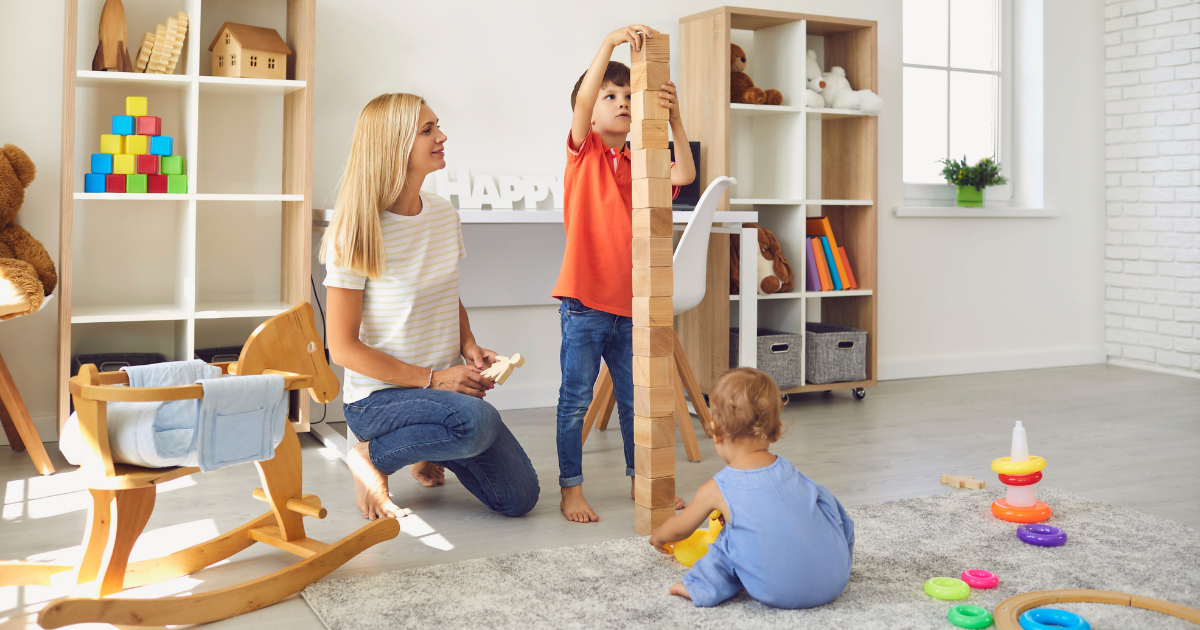
Is there anything you shouldn’t use to disinfect baby gear?
There are many different types of disinfectants, and when you have a choice, it’s best to use one that is safe for your baby. Your safest option would be using the same type of product as what you’re sanitizing with.
However, some things shouldn’t be used in your home because they can cause harm to your child or family member.
Bleach
The use of bleach to sanitize baby gear is not recommended. Bleach can cause respiratory illness and other infections in children exposed to it. Bleach is a household cleaning agent found in almost every home. Although it is used to kill germs and clean, just a little bit of bleach can cause harm if ingested by children.
Ammonia
Ammonia is a great disinfectant for some, but it should be used with caution. It can cause respiratory problems in babies and children.
Ammonianitriles are chemical compounds containing ammonia as their main component. It is an often-fatal, colorless gas that has a characteristic pungent odor. It can be found in the air around us and react with other chemicals to create toxic fumes. Ammonia is a toxic ingredient that you should never use at home, as it can cause harm to your health.
Other highly toxic chemicals
Baby gear can have a big effect on developing bodies, so it is important to use safe and non-toxic methods of disinfecting.
Lead is an extremely toxic chemical that affects the brain, behavior, learning, and growth. Lead causes damage to millions of people worldwide each year.
Environmental toxins that are not lead include arsenic, benzene, and mercury. These chemicals can cause various health problems for both adults and children at low levels.

Using UV to disinfect baby’s items
UV (ultraviolet light) is an effective way to disinfect baby items. UV sterilizes your baby’s feeding items without using chemicals or electricity, and it also prevents diseases that are spread through contact with food.
UV sterilizers are safe for use on any object, and they’re also effective because the UV rays kill 99.9% of bacteria in less than a minute.
Sanitizing the nursery is particularly important when your baby is younger than three months, was born prematurely, or has a weakened immune system. It’s recommended to use UV light and steam cleaners on germs that can cause serious illness in babies and children.
For a quick and convenient way to sterilize baby items, many parents use electric bottle sterilizers that turn water into steam. These devices are easy to use as they produce very little noise, making them ideal for babies. Furthermore, these machines can also be used in the kitchen or bathroom, safe for children of different ages.
Investigate ALL UV Sterilizer effectiveness claims
There are many different brands of UV sterilizers, so it is important to investigate which ones work the best. Not all UV sterilizers are created equally, and some can be ineffective at removing germs.
Furthermore, it is important to check the effectiveness of a product’s claims. These can be backed up by reading customer reviews or online research on Amazon and other stores where the product was sold. Investigate ALL UV Sterilizer effectiveness claims.
Consider sterilization time and cycles
The best way to sanitize baby items is by using UV light. It can disinfect in a shorter time, but it may need more cycles.
To properly sterilize the product, customers need to consider what time and cycles are required. Some UV-C sterilizers require multiple cycles for them to be effective at killing bacteria.
Whether sterilization time and cycles are important is up for debate. Some people argue that the longer a product has been in your home, the more likely it will be contaminated with bacteria or other harmful substances. Others believe that many of these products have already been through enough processing to make them safe from contaminants.
Check for UV-specific child safety features
UV-specific child safety features can help protect your baby from germs and bacteria. UL Safety certified products are designed to be safe for babies.
To ensure that your child is safe in the sun, you should check for UV-specific features. This includes a UV index rating and a warning label about UVA/UVB rays.
Regulatory standards are always changing. The best way to ensure you purchase a safe product is by checking for UV-specific child safety features, which ensures your baby will be protected from the sun’s harmful rays.
Remember that the number and type of UV LED lights matter
UV light is used to sanitize baby items. The number and type of UV LED lights matter.
The number and type of UV LED lights are important for effective sterilization. To effectively kill bacteria, there must be a sufficient amount of light and exposure time.
To choose the best UV LED light for your needs, you should consider how many LEDs are used and what type of bulbs. There is a difference between using mercury vapor lights or LED beads; one has more surface area than the other, which means it will penetrate deeper into water.
When choosing a UV LED light, it is important to consider the number and type of lights. Brands use either Mercury bulbs or LEDs sold separately in packs with different numbers of beads depending on the desired size.
What is the difference between cleaning, sanitizing, and disinfecting?
Cleaning and sanitizing are two different methods that you can use to clean a room. Disinfecting is the process of using chemicals to kill germs in a certain area, whereas cleaning with soap and water may not be enough to kill all bacteria.
Cleaning, sanitizing, and disinfecting are three different terms you may hear when cleaning your house.
When it comes to a nursery for babies or any other space where children spend a lot of time, there is an important difference between the three: disinfection kills more germs than either cleaning or sanitization. When deciding which method to use to clean up hazardous materials such as vomit on surfaces or objects like furniture, bleach solutions work best because they kill germs.
When it comes to cleaning, sanitizing, and disinfecting, the difference is that you need a certain amount of time for each. Disinfectants are often used in hospitals but can also be found at home. When using a disinfectant on your child’s toys or changing pad cover, make sure to leave them on for about 10 minutes before removing them from the contaminated area.
How can I avoid getting germs from surfaces and objects?
Keeping your baby’s nursery clean and safe is a big responsibility. It’s important to wash your hands often, be sure to clean surfaces and objects with soap or water, and sanitize the area for good measure. To avoid getting germs from surfaces and objects in your baby’s room, you must regularly keep up with housekeeping responsibilities.
The important thing to remember is that using soap and water on a surface can help remove dirt and grease. Sanitizing objects with soapy water helps lower the number of germs, but it’s up to you what level of sanitization is safe for your child.
The best way to avoid getting germs in the nursery is by using products that sanitize and disinfect surfaces without chemicals. You can also use a dishwasher or mop, but you should make sure they are cleaned with soap before each time of usage.
Which surfaces and objects do I need to clean and disinfect?
Cleaning surfaces and objects are important in ensuring that the nursery is for your baby’s safety. You will likely use soapy water to clean off surfaces or objects physically, but you can also use disinfectants like bleach to ensure the area is as safe as possible.
The best way to make sure your baby is safe from germs is by regularly cleaning and disinfecting objects that are touched often like countertops, doorknobs, faucet handles, light switches, etc. Disinfecting does not necessarily kill or remove germs because the surface will still have a certain amount of bacteria on it even after you’ve finished washing.
The first step is to identify which surfaces and objects need to be cleaned. The next step would be a disinfecting procedure, depending on the situation’s needs.
For example, public health standards require that all tableware must have at least 50 ppm (parts per million) chlorine to sanitize incoming food particles or prevent bacteria growth effectively. If you are looking for an alternative solution, such as using hydrogen peroxide instead of chlorine-based products, this can help remove harmful bacteria or viruses.
- A Guide on Ultrasonic Cleaner: Everything you need to know before getting one - January 27, 2023
- Tips for Sanitizing The Nursery For Your Baby’s Safety - February 20, 2022

